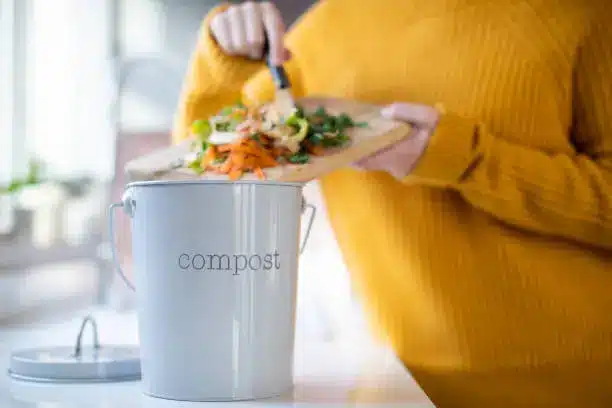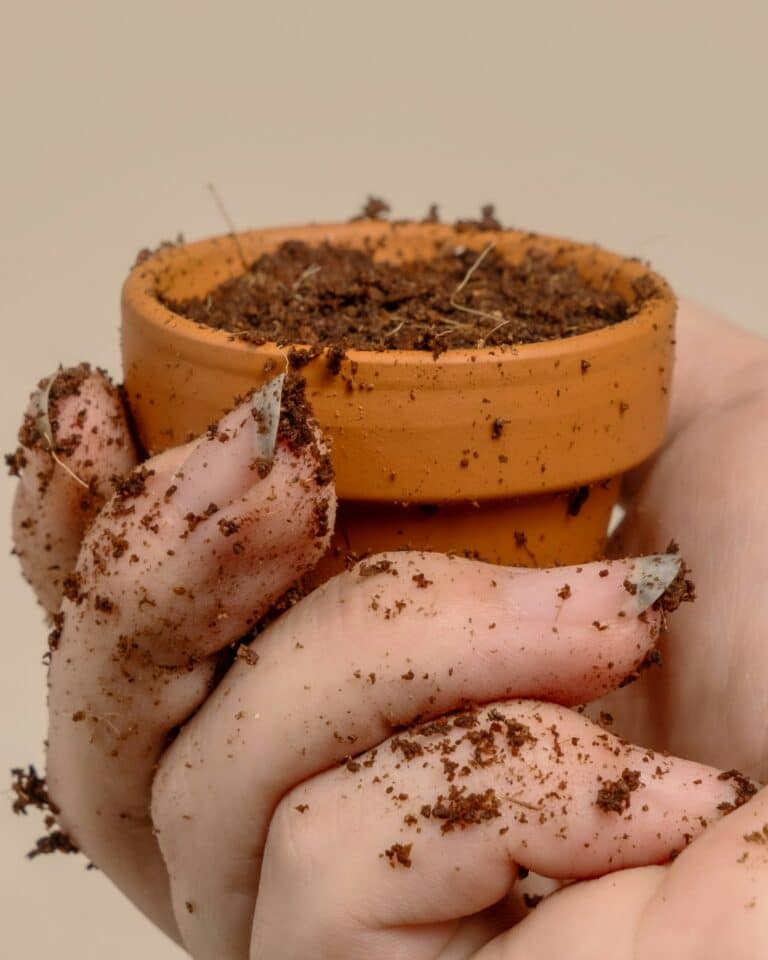As urban dwellers, we’re increasingly realizing the need to act responsibly, and one such way is through efficient waste management – enter Indoor Composting. 🌱

Yes, Indoor Composting! It may seem like a daunting task, but the reality is far from it. This article will guide you through the process, timeline, and benefits of Indoor Composting, providing you with comprehensive insights into this eco-friendly practice. So, let’s get started and revolutionize our waste for a greener tomorrow.
Indoor Composting: A Promise for a Sustainable Future
Indoor Composting, or vermicomposting, is a process where organic waste is broken down and decomposed by microbes and worms, creating a nutrient-rich compost. The process, although seemingly simple, involves a degree of science and careful management. You might be wondering, how long does Indoor Composting take? Well, brace yourself as we embark on a journey to unveil this wonder of nature. 🌍
The Science Behind the Process
Before diving into the timeline, let’s first understand the science behind composting. Composting is a natural process that involves the breakdown of organic material into a nutrient-rich soil conditioner, a miracle-growth potion for your plants. The process involves four stages: Mesophilic, Thermophilic, Cooling, and Curing, each playing a crucial role in the transformation of your waste into treasure.
The Composting Timeline
Now that we have a grasp of the science behind composting, let’s focus on the timeline. The length of the composting process can vary, but typically, indoor composting takes anywhere from 2 to 5 months. Factors such as the size of the compost bin, type of organic waste, temperature, and humidity can impact the timeline. But don’t worry, we’ll break it down for you, ensuring you have a clear understanding of the process.⏳
The Step-by-step Process
From preparation to harvest, the composting process is meticulous but rewarding. We will guide you through each step, focusing on the careful management of the compost pile, which is vital for a successful composting journey. Be it the right balance of green and brown materials, or the proper aeration and moisture levels, each step is crucial for your composting success.🏆
The Unseen Benefits
Indoor composting is not just about waste management; it’s about contributing to a sustainable future. Composting reduces the amount of waste that ends up in landfills, consequently reducing methane emissions, a potent greenhouse gas. Additionally, composting enriches the soil, reducing the need for chemical fertilizers, promoting higher yields of agricultural crops, and encouraging the proliferation of beneficial bacteria and fungi. The benefits are truly endless!
So, let’s embark on this journey together, to revolutionize our waste and create a greener tomorrow. Whether you’re an eco-conscious individual, a gardening enthusiast, or someone looking for sustainable practices, this comprehensive guide on Indoor Composting is for you. Get ready to get your hands dirty and your hearts greener. After all, every small step counts towards a sustainable future. 🌿
Unearthing the Basics: What is Indoor Composting? 🌿
Indoor composting, a remarkable solution to manage organic waste, is a process of breaking down kitchen scraps and other biodegradable waste indoors. This method not only minimizes the waste heading to our landfill but also provides nutrient-rich compost for indoor and outdoor plants. Before delving into the intricacies of the process, take a peek at this informative video titled “Indoor Composting 101: The Basics” from the channel Garden Answer.
Unlike outdoor composting, indoor composting requires lesser space, making it a viable option for those living in apartments or homes with small yards. Furthermore, it is an excellent alternative for those living in regions with harsh weather conditions, as it allows composting all year round.
At this point, you might be pondering the various types of indoor composting methods. Well, let’s dive into it and explore the most common methods that are easily adaptable in your household.
1. Vermicomposting
This method utilizes earthworms, especially red wigglers, to consume organic waste and excrete nutrient-rich compost. This method is odor-free and efficient, making it a popular choice among indoor composters.
2. Bokashi Composting
Bokashi composting uses a specific group of microorganisms to ferment kitchen waste in a sealed bin. The resulting compost is highly nutritious and can be used directly in the garden.
3. Composting with an Electric Composter
Electric composters speed up the composting process by controlling temperature and oxygen levels. It is an excellent option for those looking for convenience and speed.
Understanding the Timeline: How Long Does Indoor Composting Take? ⏳
While it is a sustainable solution, indoor composting is not an instant process. The timeline of indoor composting varies based on the method used, the type of waste, and the conditions in which the compost is kept. In general, it can take anywhere from 2 weeks to 2 months.
| Method | Timeline |
|---|---|
| Vermicomposting | 2-3 months |
| Bokashi Composting | 2 weeks to 1 month |
| Composting with an Electric Composter | 5 hours to 2 weeks |
Check the table above to compare the timelines of different indoor composting methods. Remember, patience is key when composting indoors. The process takes time, but the result is well worth the wait. The final product, the compost, is a rich, nutrient-dense medium that can significantly enhance the quality of your indoor and outdoor plants.
Nurturing the Process: Tips for Efficient Indoor Composting 🧐
Composting indoors may seem like a daunting task, but with the right practices, it can be a seamless part of your daily routine. Below are some proven tips to help you get started on your indoor composting journey.
- Balance your compost pile: A healthy compost pile is all about balance. It requires a mix of green materials (nitrogen-rich like vegetable scraps) and brown materials (carbon-rich like dried leaves).
- Maintain the moisture: Compost piles need to be damp but not overly wet. If the compost is too dry, it will delay the composting process, and if it’s too wet, it may lead to unpleasant odors.
- Turn the compost: Regularly turning the compost pile ensures that all materials decompose evenly and faster.
Indoor composting is an excellent way to contribute to a greener tomorrow. With minimal effort, we can significantly reduce the amount of waste we produce while enriching the soil for our plants. So, why not start your indoor composting journey today? It’s a small step towards a healthier environment.
For those interested in learning more about indoor composting, I recommend the video “How to Start Composting in a Small Apartment” from the channel Epic Gardening. Let’s revolutionize our waste and pave the way for a greener tomorrow.
Conclusion
In conclusion, we have embarked on a highly technical and enlightening journey, peering into the intricate world of Information Technology and Software Engineering. We have untangled the complex web of concepts and terminologies that typically shrouds this field, making it more accessible and understandable for our readers.
We started by exploring the definition of software engineering, a discipline that intertwines computer science and mathematics to design, develop, and maintain software. We highlighted the importance of software engineering in our rapidly digitalizing world, noting its significant role in improving efficiency, enhancing user experience, and reducing costs. We also discussed the fundamental principles and concepts of software engineering, such as modularity, abstraction, and encapsulation, illustrating how they contribute to the robustness and reliability of software systems.
Additionally, we delved into the various stages of the software development lifecycle (SDLC), from requirement analysis to design, implementation, testing, deployment, and maintenance. We underscored the significance of each stage, emphasizing that skipping or overlooking any phase could lead to sub-optimal outcomes or even outright project failure.
Furthermore, we provided insights into the different software development methodologies, including Waterfall, Agile, and DevOps, outlining their strengths, weaknesses, and suitability for different types of projects. We underscored the shift towards Agile and DevOps in the software industry, attributing it to their flexibility, responsiveness to change, and emphasis on collaboration and continuous improvement.
Moreover, we touched on some of the emerging trends in software engineering, such as artificial intelligence, cloud computing, and cybersecurity, predicting their potential impact on the field. These trends, we noted, present both opportunities for innovation and challenges that need to be addressed.
The depth and breadth of the information presented in this article reflect the complexity and dynamism of the software engineering field. Nevertheless, we believe that our methodical approach and clear explanations have made the topic more digestible for our readers. We encourage you to comment and share your thoughts and experiences, enriching the conversation and enhancing our collective understanding.
Lastly, we urge you to apply the knowledge gained from this article in your professional or academic endeavors. Whether you are an aspiring software engineer, a seasoned professional, or a curious observer, we hope that this article has inspired you and equipped you with valuable insights that will propel you forward.
For further research and reading, you can check out the following active sources:
1. [IEEE Software Engineering Standards](https://www.computer.org/technical-committees/software-engineering/)
2. [ACM Software Engineering Code of Ethics](https://www.acm.org/code-of-ethics)
Remember, in the realm of software engineering, the only constant is change. So, let’s keep learning and growing together! 💻🚀
References:
1. IEEE Software Engineering Standards
2. ACM Software Engineering Code of Ethics
Tags: Software Engineering, Information Technology, Agile, DevOps, SDLC



